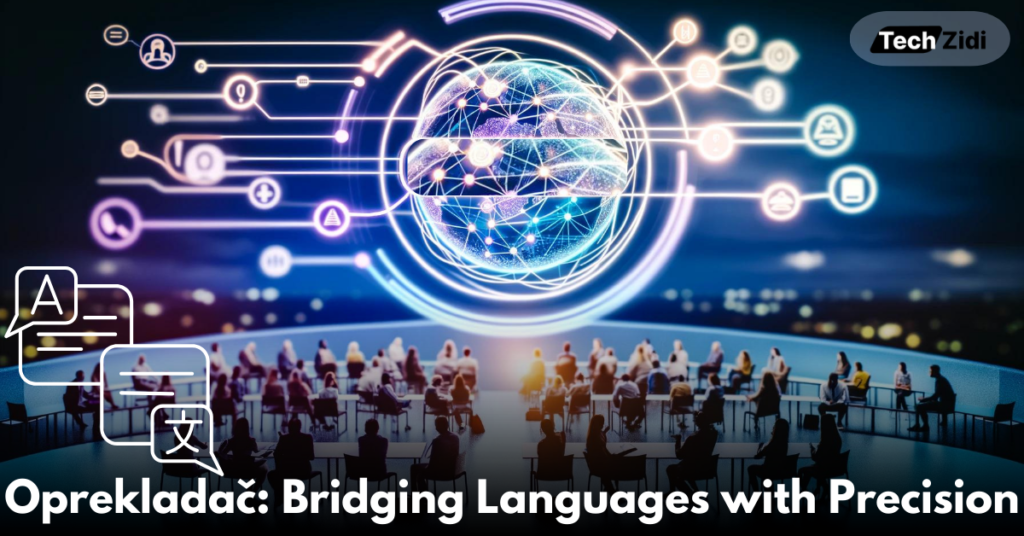Oprekladač: Bridging Languages with Precision
Language is important for communicating with and understanding each other. As cultures and societies have interacted throughout history, the need for good translation has grown. The world of translation has changed a lot over the years, from the days when translations were done by hand to now, when machine learning and artificial intelligence are used. In this article, we will talk about the history of language translation technology, with a focus on the ground-breaking idea of “oprekladač,” a modern translation tool that has changed how we can communicate across language barriers.
The Start of Translation
Translation has roots in the earliest times, when interpreters were very important for trade, diplomacy, and cultural exchanges. Previously, translation was labor-intensive and done by hand. It also relied heavily on human intelligence and language skills.
Electronic translators and dual-language dictionaries
The 17th and 18th centuries saw the first bilingual dictionaries, which was a big step forward in the field of translation. Scholars and translators used these dictionaries as useful reference books. As technology got better, the process got even easier when electronic translators came out in the middle of the 20th century. The hand-held devices could translate words one-by-one, but they weren’t smart enough to understand what the words meant in context.
Automated Translation Is Growing
There was a lot of research and development in the field of machine translation after World War II. Language rules that had already been set were used to translate text in the first attempts at machine translation, which were called rule-based systems. However, they weren’t very accurate because language is complicated and depends on the situation.
Statistical Machine Translation (SMT)
Statistical machine Translation came about in the late 20th century. It uses huge sets of bilingual data to make translations more accurate. By looking at patterns and odds, SMT algorithms could make translations that are more relevant to the situation. Problems still existed, especially with languages that didn’t have enough parallel data, even though SMT was an improvement.
Neural Machine Translation (NMT)
Neuronal machine translation has become very popular in the last ten years. NMT processes complete sentences and paragraphs using deep learning techniques to produce extremely accurate translations while taking into account the context of the original text. With the help of NMT, language gaps have been closed in a big way.
Understanding Oprekladač
Oprekladač is a revolutionary translation technology that is at the forefront of the NMT revolution. The Oprekladač system uses cutting-edge neural network architectures and was created by a group of AI and language experts. It uses AI, natural language processing, and big data together to provide unmatched translation results.
How Oprekladač Works
The best thing about Oprekladač is that it can understand the context, idioms, and subtleties of different languages. It breaks sentences down into many layers so that it can understand both the grammar and the meaning. By looking at the huge amount of multilingual content on the internet, Oprekladač is always getting better at translating.
Advantages of Oprekladač
Here are some advantages of Oprekladač:
Precision:
Oprekladač has very good translation precision and often does better than other machine translation systems.
Speed:
Oprekladač’s advanced architecture lets it generate translations quickly, making it easy to communicate across languages.
Sensitivity:
Opreklada can adapt to shifting linguistic trends and user preferences because it is AI-powered.
Translating with People in Mind
Oprekladač is a huge step forward in machine translation, but it’s still important to recognize the importance of human translators. Professional translators are sometimes indispensable because they understand other cultures, are creative, and know a lot about the subject they are translating.
Translation Technology in the Future
As technology changes, translating tools like Oprekladač will also change. Soon, translations will be even more accurate, sensitive to context, and open to everyone. Language is naturally complicated and always changing, though, so the goal of a perfect, fully automated translation system is still a long way from being achieved.
Conclusion
Oprekladač is a great example of the lengths to which technology has come in helping people translate languages. We’ve come a long way in breaking down language barriers, from the early days of manual translation to the advanced neural networks of today. Oprekladač and other services like it are very helpful for global communication, but we shouldn’t forget how valuable human translators are. Finding a balance between cutting-edge technology and human knowledge is key to the future of translation. This will make sure that language stays a bridge, not a wall, in our diverse world.



